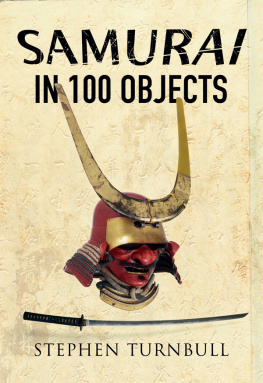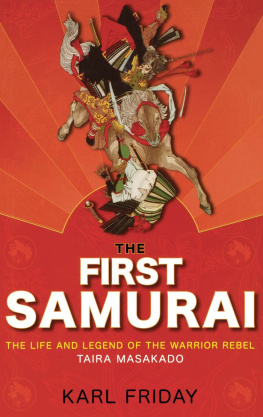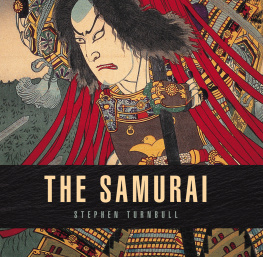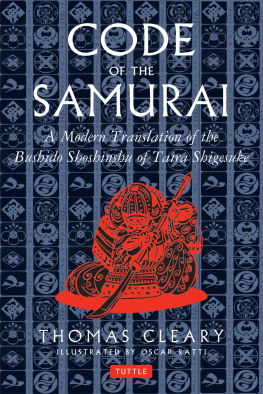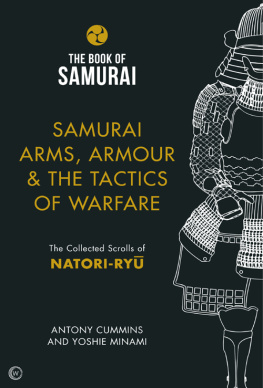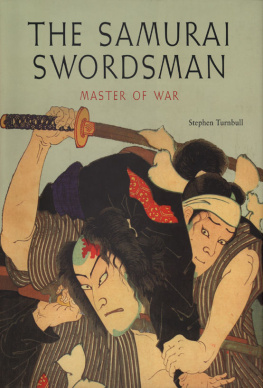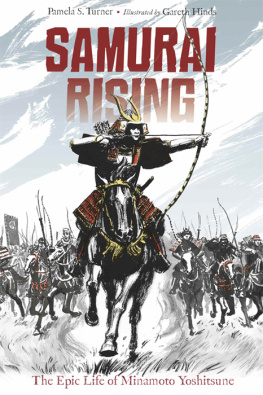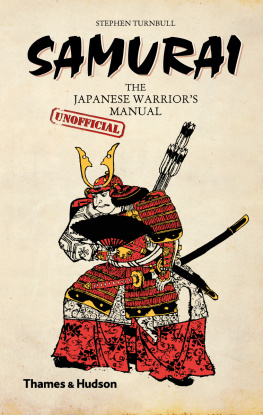
AUTHOR
Stephen Turnbull holds a degree in Naval Architecture and Marine Engineering, but spent his early career at the Johnson Space Center doing Space Shuttle structural analysis, and space navigation. An amateur historian and a long-time ship modeler, Mark Lardas is currently working in League City, Texas. He has written extensively about modeling as well as naval, maritime, and military history.
ILLUSTRATOR
Giuseppe Rava studied graphic design, and began his work as an illustrator in 1983. He specializes in detailed historical reconstructions, and has illustrated Osprey titles on subjects as diverse as the Aztecs, the Ancient Greeks, Roman battle tactics, several 19th-century American subjects, the modern Chinese Army, and a number of books in the Fortress series. His work features in exhibitions and publications throughout the world.
ARTISTS NOTE
Readers may care to note that the original paintings from which the colour plates in this book were prepared are available for private sale. The Publishers retain all reproduction copyright whatsoever. The artist can be contacted via the following website:
www.g-rava.it
The Publishers regret that they can enter into no correspondence upon this matter.
AUTHORS NOTE
The Gempei War, the great civil war of Japan, was named after the two rival samurai clans called the Minamoto and the Taira. When their names are pronounced in the Chinese style of Japanese orthography as Genji and Heike respectively and the first characters are combined, it produces the compound Gempei, although modern written Japanese tends to use a form of romanisation that leads to the compound Gempei becoming Gen-pei. It is as the Gempei War that the great conflict is best known, so the traditional form will be retained here. For the further convenience of readers the lunar dates used in the primary sources have been converted to the Western calendar, and following conventional Japanese usage all names are given with the surname first.
I have written about the Gempei War many times, but for this book I have ignored all my previous work and gone back to the original Japanese source materials combined with data drawn from observational visits to each of the main battlefields involved. The reader may therefore be confident that this is the most authoritative account of the Gempei War currently available. All the pictures are my own except a few which are gratefully acknowledged in the captions.
THE WOODLAND TRUST
Osprey Publishing are supporting the Woodland Trust, the UKs leading woodland conservation charity, by funding the dedication of trees.


First published in Great Britain in 2016 by Osprey Publishing,
PO Box 883, Oxford, OX1 9PL, UK
1385 Broadway, 5th Floor, New York, NY 10018, USA
E-mail:
This electronic edition published in 2016 by Bloomsbury Publishing Plc
Bloomsbury is a registered trademark of Bloomsbury Publishing Plc
2016 Osprey Publishing Ltd
OSPREY PUBLISHING IS PART OF BLOOMSBURY PUBLISHING LTD
All rights reserved
You may not copy, distribute, transmit, reproduce or otherwise make available this publication (or any part of it) in any form, or by any means (including without limitation electronic, digital, optical, mechanical, photocopying, printing, recording or otherwise), without the prior written permission of the publisher. Any person who does any unauthorised act in relation to this publication may be liable to criminal prosecution and civil claims for damages.
A CIP catalogue record for this book is available from the British Library.
ISBN: 978-1-4728-1384-8 (PB)
ISBN: 978-1-4728-1386-2 (eBook)
ISBN: 978-1-4728-1385-5 (ePDF)
Editorial by Ilios Publishing Ltd, Oxford, UK (www.iliospublishing.com)
Maps by Bounford.com
3D birds-eye views by The Black Spot
Battlescene illustrations by Giuseppe Rava
To find out more about our authors and books visit www.ospreypublishing.com. Here you will find our full range of publications, as well as exclusive online content, details of forthcoming events and the option to sign up for our newsletters. You can also sign up for Osprey membership, which entitles you to a discount on purchases made through the Osprey site and access to our extensive online image archive.
DEDICATION
The Gempei War 118085 is dedicated to my seventh grandchild, Sebastian Turnbull, born on 24 July 2015.
INTRODUCTION
THE GEMPEI WAR IN JAPANESE CULTURE
The sound of the bell of Gionshja echoes the impermanence of all things. The hue of the flowers of the teak tree declares that they who flourish must be brought low. Yea, the proud ones are but for a moment, like an evening dream in springtime. The mighty are destroyed at the last, they are but as the dust before the wind.
With these words begins Heike Monogatari (The Tale of the Heike), the great literary epic about Japans Gempei War, where it is transformed into a dark romance. Unlike Heike Monogatari, it is the aim of the present work to provide a clear, concise and authoritative historical account of that great conflict, and although the emphasis will be on the war as a military campaign, the place of the Gempei War as a vitally important political and cultural phenomenon will not be overlooked. So far-reaching was its outcome in political terms that the Gempei War might be regarded not simply as a Japanese civil war but even as the Japanese civil war. Many other internal conflicts would take place over the following centuries but none, not even the decisive Sekigahara campaign of 1600, would bring about such a profound change in Japanese society as did the Gempei War. The battle of Sekigahara gave Japan a new ruling dynasty, but the Gempei War had already given Japan a new form of rule. It had created a situation whereby Japan was no longer governed by an imperial bureaucracy under the emperor but by a military aristocracy drawn from the samurai class whose rule was exercised through the Shogun, Japans military dictator. By means of the Gempei War the samurai displaced the imperial court and entered the mainstream of Japanese political life, a position they were to hold until the emergence of modern Japan in 1868.
The political consequences of the Gempei War were therefore substantial, but it also had many lasting cultural influences through its effects on the samurai, both in terms of how they were perceived and what future samurai would do. Through art and literature the Gempei War provided successive generations of Japanese warriors with a reference point from which to draw most of what became known as the samurai tradition. Heike Monogatari, which relates the story of the Gempei War as a drama of fate and retribution inflicted upon the Taira family, will be widely quoted in this book. Woodblock prints and scrolls showing the heroes of the Gempei War will provide many of the illustrations, and reference will also be made to the vivid retelling of these stories within Japans classical Noh theatre. There are more plots in the Noh dramas based on the Gempei War than on any other period of Japanese history, and over one in ten of all Noh plays are based on incidents related in Heike Monogatari
Next page

